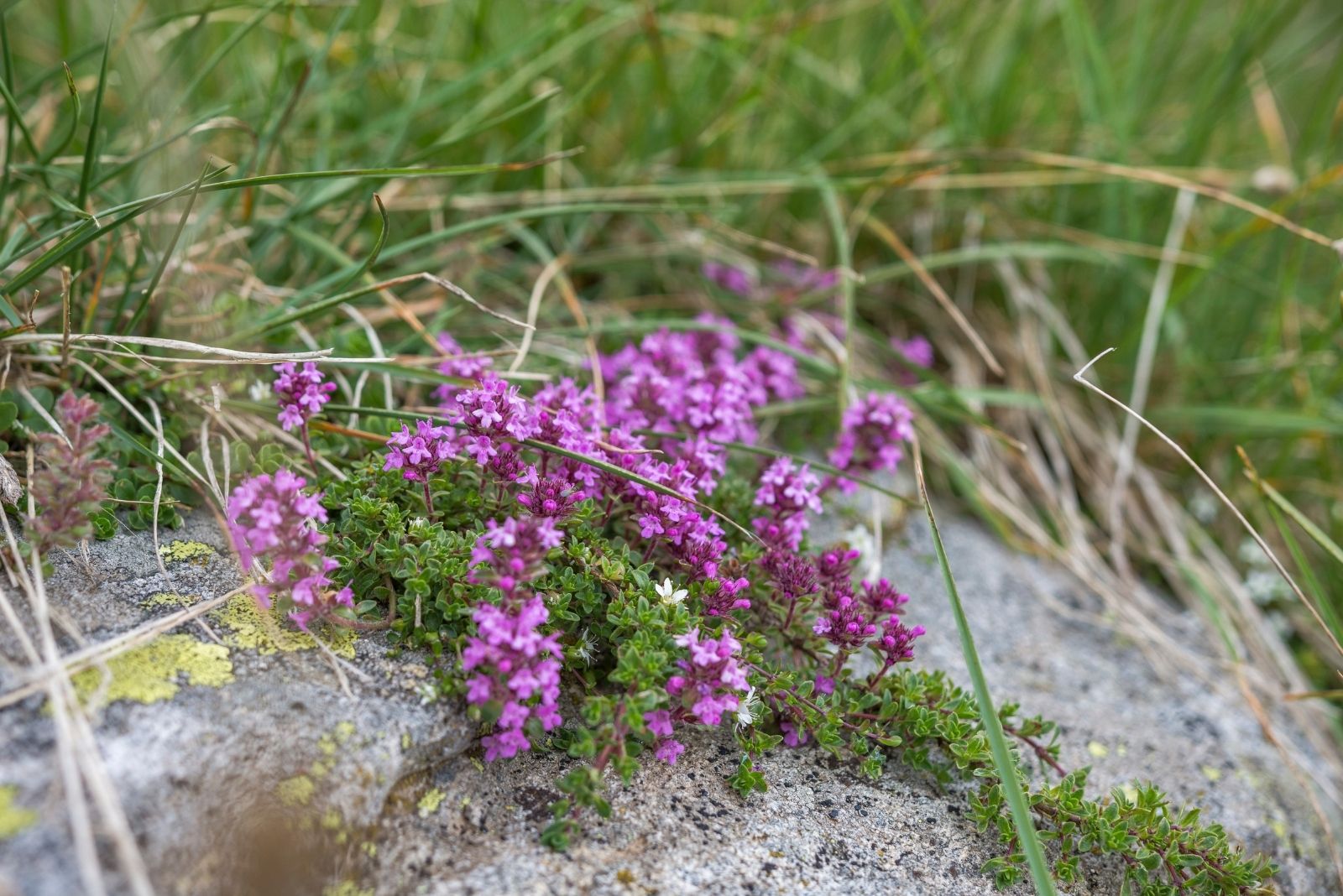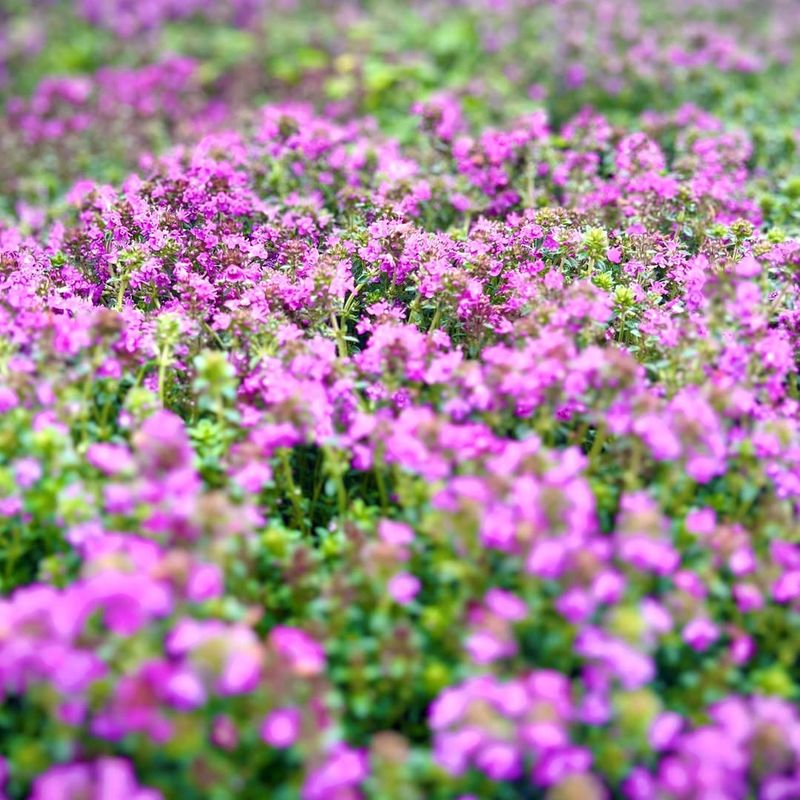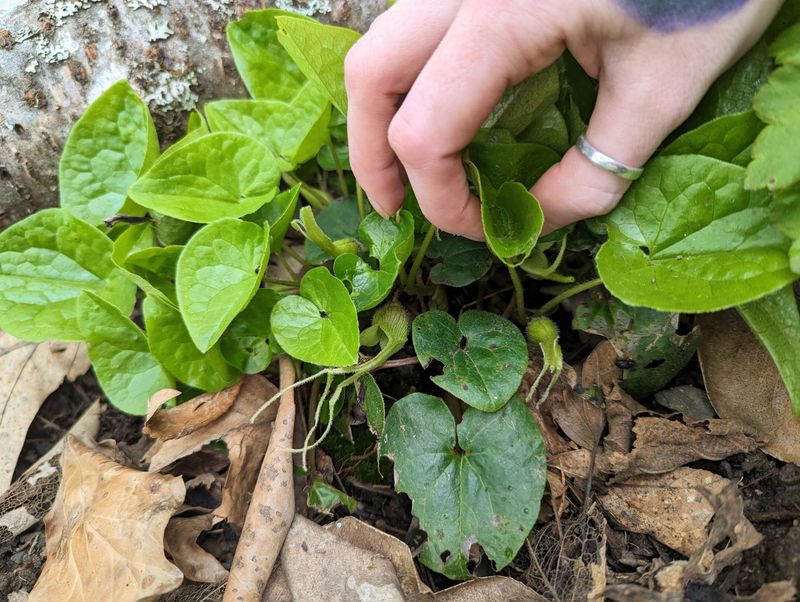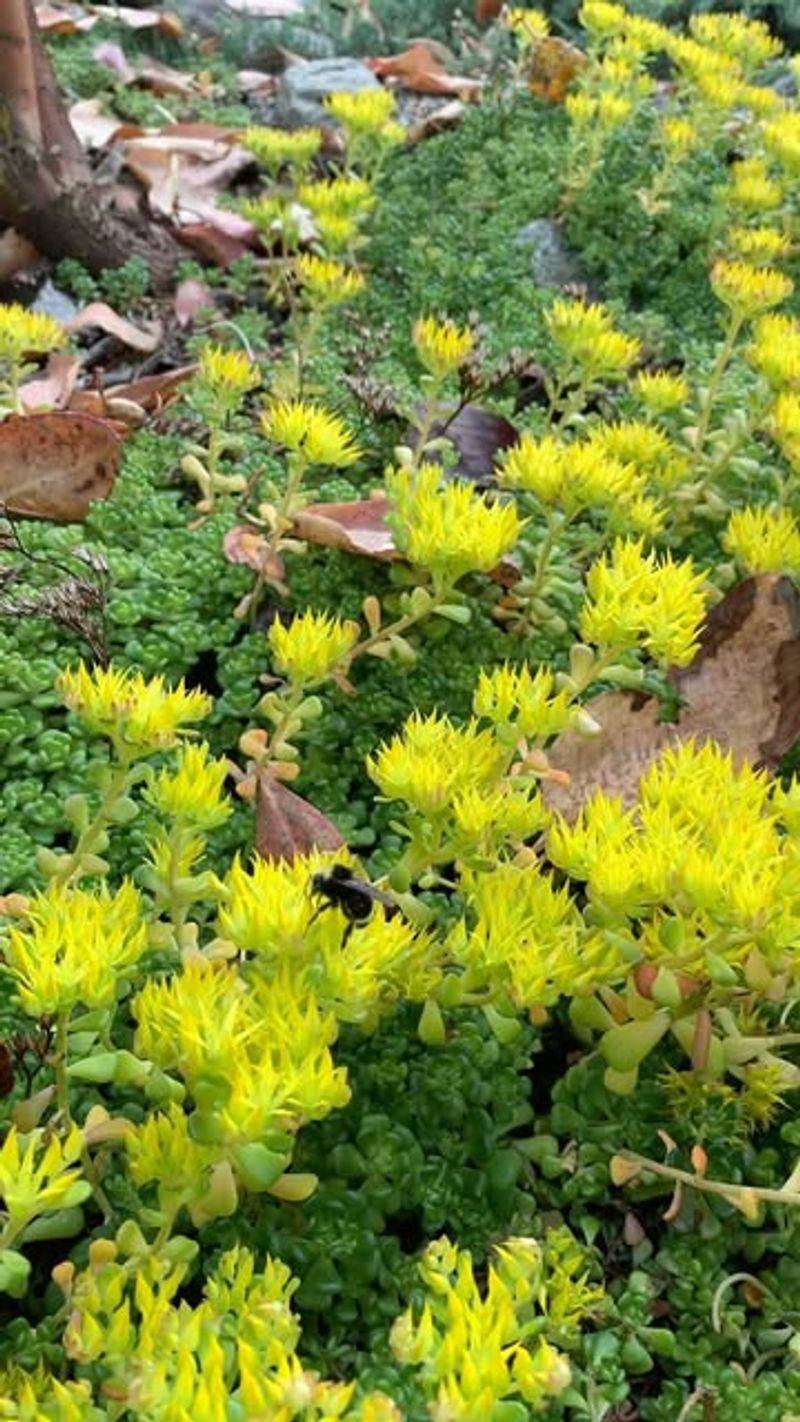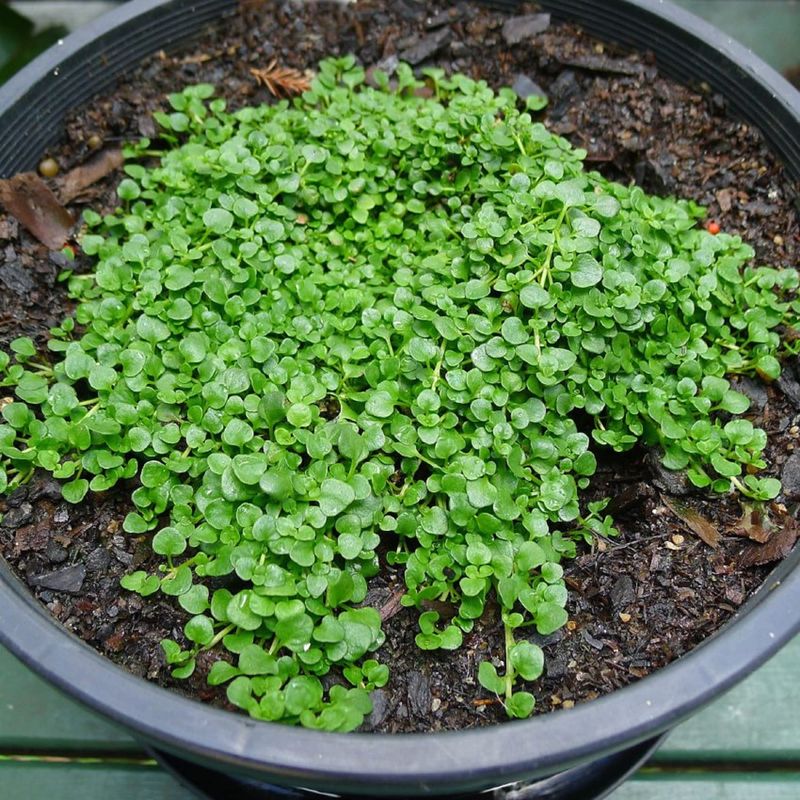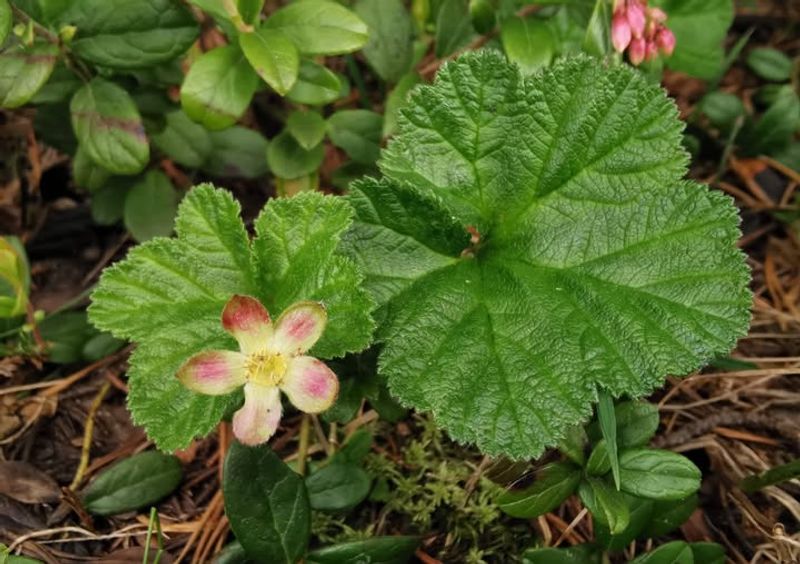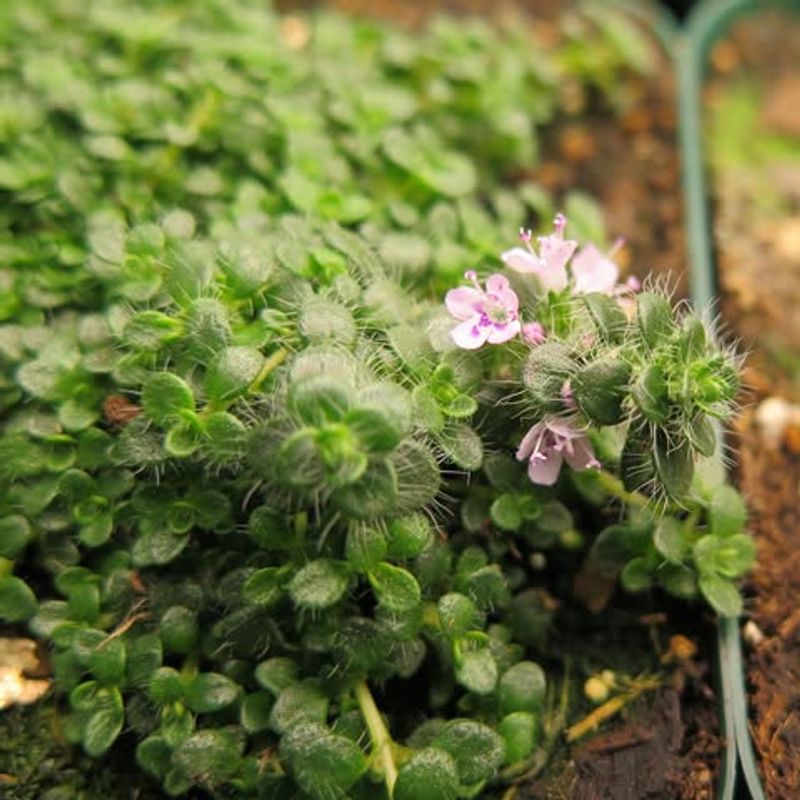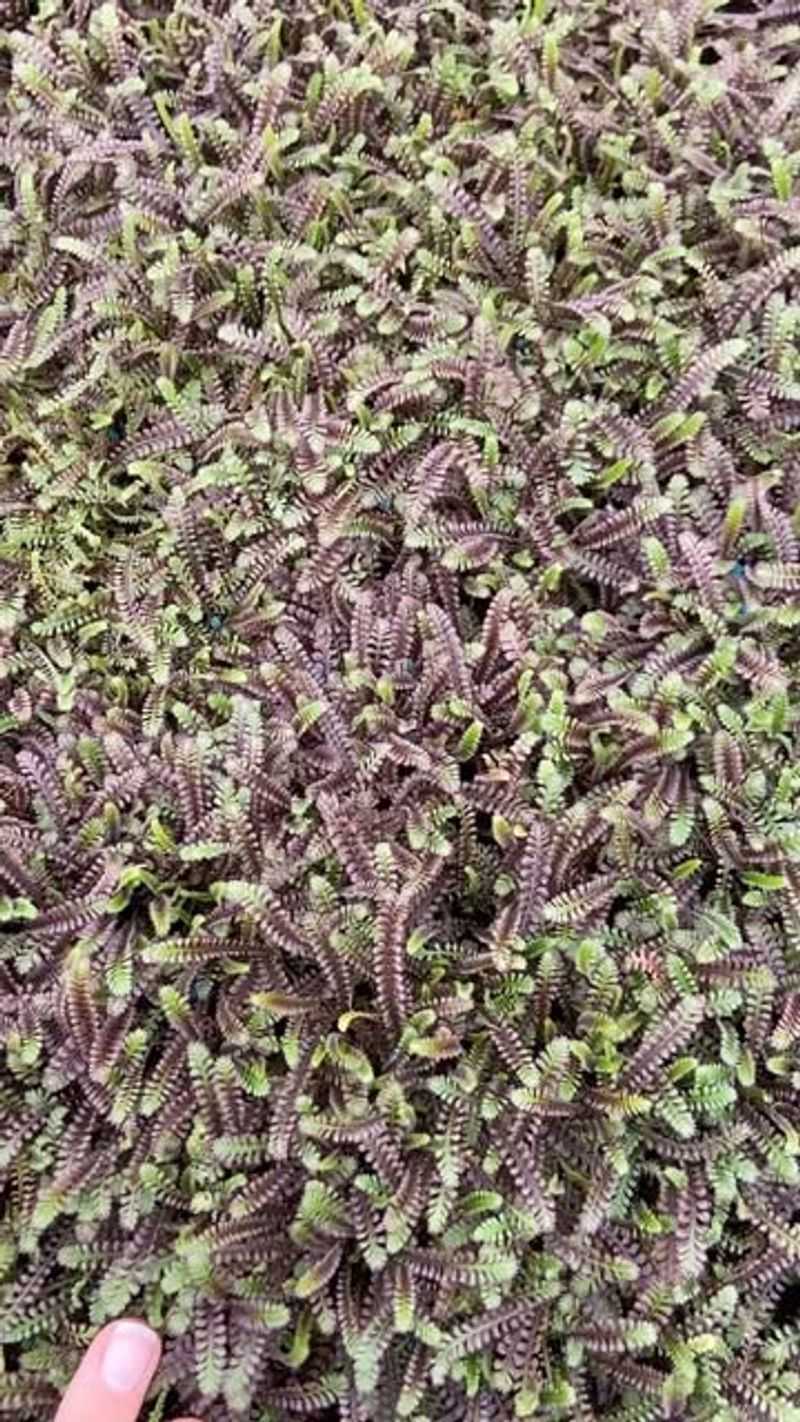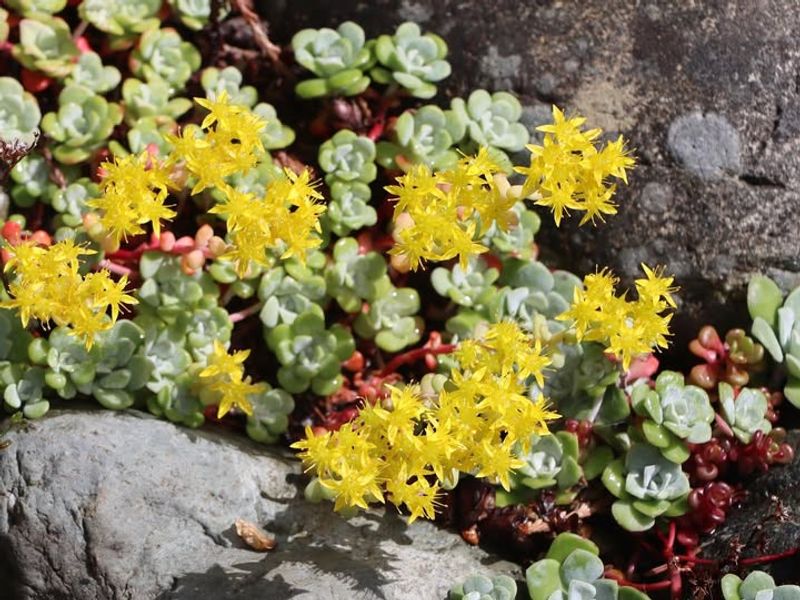Oregon’s cool, wet winters and dry summers create unique challenges for gardeners looking to fill bare spots in their yards. Ground covers offer an excellent solution, spreading naturally to suppress weeds while adding beauty to your landscape.
Whether you’re dealing with shade under towering Douglas firs or sunny slopes that need erosion control, the right ground cover can transform problem areas into low-effort, eye-catching garden features.
1. Kinnikinnick (Arctostaphylos uva-ursi)
Native to the Pacific Northwest, this evergreen spreader thrives in Oregon’s climate without fuss. Its glossy leaves stay green year-round, while small pink flowers appear in spring, followed by bright red berries that birds adore.
Kinnikinnick handles poor soil remarkably well and requires almost no water once established. Plant it on slopes where erosion is a concern, or use it as a lawn alternative in areas with light foot traffic.
The dense mat it creates naturally chokes out weeds, saving you hours of garden maintenance.
2. Creeping Thyme (Thymus serpyllum)
Walk across this fragrant ground cover and your garden fills with a delightful herbal scent. Tiny purple or pink blooms blanket the low-growing foliage each summer, attracting bees and butterflies to your Oregon yard.
Creeping thyme tolerates drought beautifully once its roots settle in, making it ideal for water-wise gardens. It works wonderfully between stepping stones or as a lawn replacement in sunny spots that don’t see heavy use.
Bonus: you can harvest the leaves for cooking!
3. Wild Ginger (Asarum caudatum)
Shade gardeners in Oregon will fall in love with this Pacific Northwest native that carpets forest floors with heart-shaped leaves. Its unique burgundy flowers hide beneath the foliage, creating little surprises when you peek under the canopy.
Wild ginger spreads slowly but steadily through rhizomes, eventually forming a thick, weed-blocking mat. It prefers moist, rich soil similar to what you’d find under mature trees.
This woodland beauty brings an authentic Northwest feel to shady corners where grass refuses to grow.
4. Blue Star Creeper (Isotoma fluviatilis)
Imagine a carpet of tiny blue stars scattered across your garden—that’s what this charming ground cover delivers each spring. The delicate blooms contrast beautifully against the fine-textured green foliage that stays low to the ground.
In Oregon’s mild climate, blue star creeper often remains evergreen through winter. It tolerates moderate foot traffic, making it perfect for filling gaps between pavers or creating a soft pathway.
Keep it slightly moist for best results, though it adapts to various conditions once established.
5. Sedum (Sedum species)
Succulent leaves store water efficiently, allowing these tough plants to survive Oregon’s dry summers with minimal irrigation. Dozens of varieties offer different colors, from blue-green to burgundy, with cheerful yellow, pink, or white flowers appearing in late summer.
Sedum thrives in poor, rocky soil where other plants struggle, making it perfect for challenging spots. Its fleshy foliage creates interesting texture contrasts when paired with traditional perennials.
Plant it in full sun for the best color and most compact growth habit.
6. Corsican Mint (Mentha requienii)
This miniature mint releases a strong peppermint aroma when stepped on, turning garden paths into sensory experiences. Tiny purple flowers dot the bright green mat in summer, though the real attraction is the fragrant foliage.
In Oregon’s climate, Corsican mint spreads quickly in moist, partially shaded areas, filling cracks between stones with ease. It needs consistent moisture but rewards you with a soft, moss-like appearance.
Keep it contained, as it can become enthusiastic in ideal conditions—but that’s rarely a problem in designated ground cover areas.
7. Creeping Raspberry (Rubus calycinoides)
Crinkled, textured leaves give this ground cover an almost prehistoric appearance that adds character to any Oregon landscape. Unlike its fruit-bearing cousins, this species focuses on foliage, creating a dense mat that stays around six inches tall.
Creeping raspberry handles both sun and partial shade, adapting to various garden conditions throughout the state. Its evergreen leaves develop bronze tints in cold weather, adding winter interest when other plants fade.
Tiny white flowers occasionally appear, but the real value lies in its reliable, weed-suppressing coverage.
8. Woolly Thyme (Thymus pseudolanuginosus)
Soft, fuzzy leaves give this ground cover its common name and make it irresistible to touch. The silvery-green foliage forms a dense, low mat that resembles a soft blanket draped over the ground.
Woolly thyme thrives in Oregon’s sunny, well-drained spots, requiring almost no water once established. It rarely flowers, which some gardeners prefer as it maintains a uniform appearance throughout the season.
Use it between pavers or as a lawn substitute in areas where you want texture without constant upkeep.
9. Brass Buttons (Leptinella squalida)
Fern-like foliage in shades of bronze and green creates a tapestry effect as this New Zealand native spreads across the ground. Small yellow button-shaped flowers appear in summer, though the intricate leaves steal the show year-round.
Brass buttons tolerates light foot traffic and stays under two inches tall, making it excellent for pathways in Oregon gardens. It prefers consistent moisture and partial shade but adapts to sunnier locations with adequate water.
The bronze tones intensify in cooler weather, providing seasonal color changes.
10. Oregon Stonecrop (Sedum oreganum)
As its name suggests, this succulent is right at home in Oregon gardens, having evolved to handle the state’s climate perfectly. Fleshy green leaves turn reddish in cool weather, while yellow star-shaped flowers create bright clusters in early summer.
Oregon stonecrop thrives in rocky, well-drained areas where many plants fail, making it ideal for difficult spots. It spreads slowly but reliably, forming attractive mats that require virtually no care.
This native plant supports local pollinators and brings authentic regional character to your landscape design.

